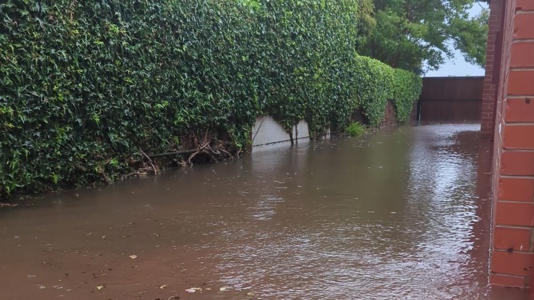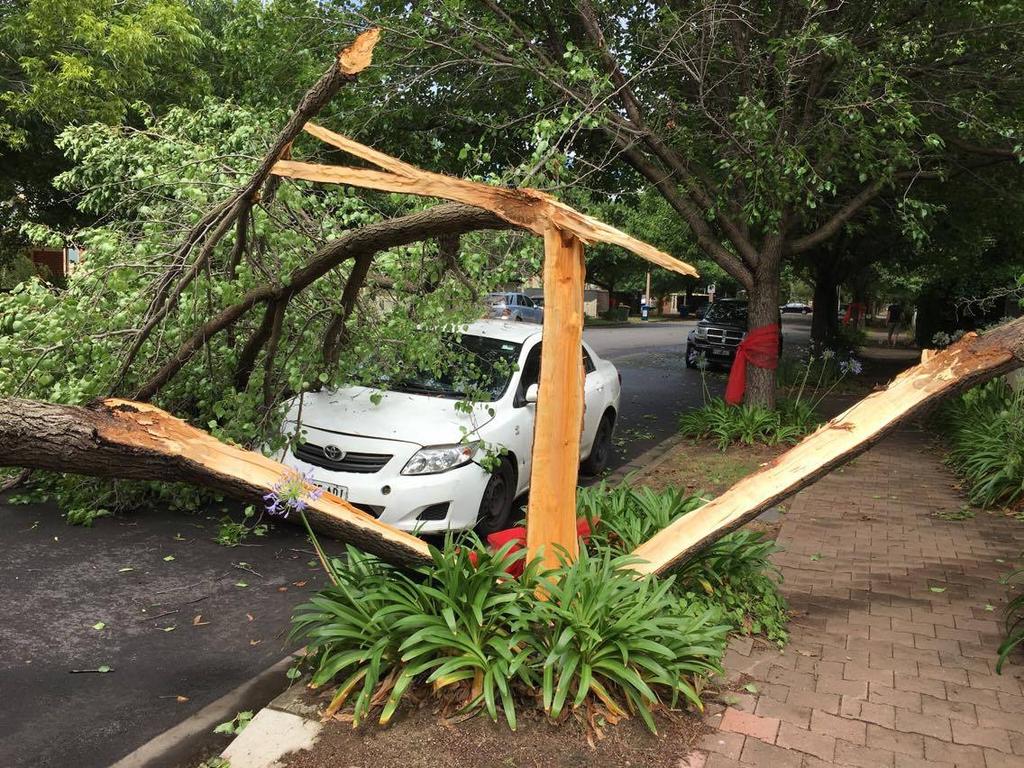South Australia is grappling with the aftermath of a ferocious storm that swept through the region, causing extensive damage to homes and leaving thousands without power. The night of wild weather brought relentless winds, heavy rain, and destructive elements that wreaked havoc across various communities.
Reports indicate that the storm, which struck overnight, resulted in significant property damage, with homes bearing the brunt of the intense weather conditions. Local authorities are now working tirelessly to assess the extent of the destruction and provide assistance to those affected.
One of the primary consequences of the storm is the widespread power outages, affecting thousands of residents who find themselves without electricity. Emergency services are on high alert, responding to distress calls and coordinating efforts to restore power as quickly as possible. The outage has also impacted essential services, further complicating the situation for those in need of urgent assistance.

Residents are urged to exercise caution as they navigate the aftermath of the storm. Fallen trees, debris-strewn roads, and damaged infrastructure pose additional risks to public safety. Emergency services have deployed teams to clear blocked roads and ensure that access is restored to affected areas.
Local communities are coming together to support one another in the wake of this natural disaster. Emergency shelters have been set up to provide temporary accommodation for those displaced from their homes, and relief efforts are underway to provide essential supplies to affected families.
Government officials are closely monitoring the situation, and the state’s emergency response mechanisms have been activated to address the immediate needs of the affected population. The focus is on ensuring the safety and well-being of residents, providing prompt assistance, and initiating recovery efforts to rebuild the communities affected by the storm.
As the cleanup begins, authorities are emphasizing the importance of community resilience and preparedness for future weather events. Climate scientists have warned that extreme weather events may become more frequent and intense due to climate change, underscoring the need for ongoing efforts to mitigate and adapt to these challenges.
In the face of adversity, the resilience of South Australian communities shines through as neighbors, emergency services, and government agencies work collaboratively to navigate the aftermath of this severe storm. The recovery process will undoubtedly be a collective effort, emphasizing the strength and unity of the affected communities as they rebuild and move forward.
The Impact on Homes and Infrastructure in South Africa
The storm’s fury unleashed a barrage of destructive elements, leaving a trail of damaged homes and disrupted infrastructure. Residential areas bore the brunt of the onslaught, with reports of roofs torn off, windows shattered, and structures rendered unstable. The immediate aftermath paints a grim picture of the challenges residents face in rebuilding their lives.
The loss of power amplifies the difficulties for affected residents. Thousands find themselves in the dark, grappling with the dual challenges of repairing their homes and coping with the absence of essential services. Emergency services are working tirelessly to restore electricity, recognizing the critical role it plays in the recovery process.
Emergency shelters have become a beacon of hope for those displaced from their homes. These shelters not only provide a roof over the heads of the affected but also serve as community hubs where individuals and families can access information, resources, and emotional support. The resilience of the human spirit is evident as strangers come together to offer comfort and assistance.
Challenges faced by South Australia to Essential Services
Beyond the immediate physical damage, the storm has disrupted essential services, posing additional challenges for the affected communities. Hospitals, schools, and other critical infrastructure have been hit, exacerbating the difficulties for those in need of medical attention, education, and public services. Emergency services are redirecting resources to address these challenges, ensuring that no one is left without essential care.
The coordination between government agencies, emergency services, and non-profit organizations is crucial in streamlining the response and recovery efforts. The challenges posed by disrupted essential services underscore the need for a comprehensive and collaborative approach to rebuilding.
Government Response and Future Preparedness in South Australia
Local authorities have activated the state’s emergency response mechanisms, deploying resources to assess and address the most urgent needs. Coordination between government agencies, emergency services, and non-profit organizations is crucial in streamlining the response and recovery efforts. The resilience of the affected communities is evident as they rally together, exemplifying the strength that emerges in times of crisis.

As the cleanup and recovery efforts commence, the focus shifts to long-term planning and preparedness. Climate scientists have long warned of the increasing frequency and intensity of extreme weather events due to climate change. This storm serves as a stark reminder of the importance of proactive measures to mitigate and adapt to these challenges. Government officials are reassessing and strengthening building codes, infrastructure resilience, and emergency response strategies to better prepare for future events.
The road to recovery will be arduous, requiring sustained efforts from all stakeholders involved. Financial aid and support from both the state and federal governments are crucial in facilitating the rebuilding process. Community-driven initiatives, such as volunteer programs and local fundraisers, play a pivotal role in restoring a sense of normalcy to the lives of those affected.
Community Resilience in Action
In conclusion, the South Australian storm has left an indelible mark on the affected communities, testing their resilience and highlighting the need for robust disaster preparedness. As recovery efforts persist, the collaboration between government agencies, emergency services, and communities will play a pivotal role in rebuilding and fortifying against future challenges. The spirit of unity and compassion that emerges in the face of adversity will undoubtedly guide South Australia toward a brighter and more resilient future.
This ordeal serves as a testament to the strength of communities when faced with adversity. As individuals and organizations continue to work hand in hand, the rebuilding process becomes not just a physical restoration of homes and infrastructure but a collective effort to weave the fabric of community bonds even tighter.
In the coming weeks and months, the focus will shift from immediate relief efforts to the long-term rebuilding and resilience of these communities. Lessons learned from this storm will inform future preparedness strategies, emphasizing the importance of adaptive measures in the face of a changing climate.
As South Australia charts its course toward recovery, the nation watches with empathy and solidarity, recognizing that the response to this storm is a shared responsibility. The lessons learned from this experience will undoubtedly shape the region’s preparedness for future challenges, fostering a community that is not only weathering the storm but emerging stronger on the other side.



